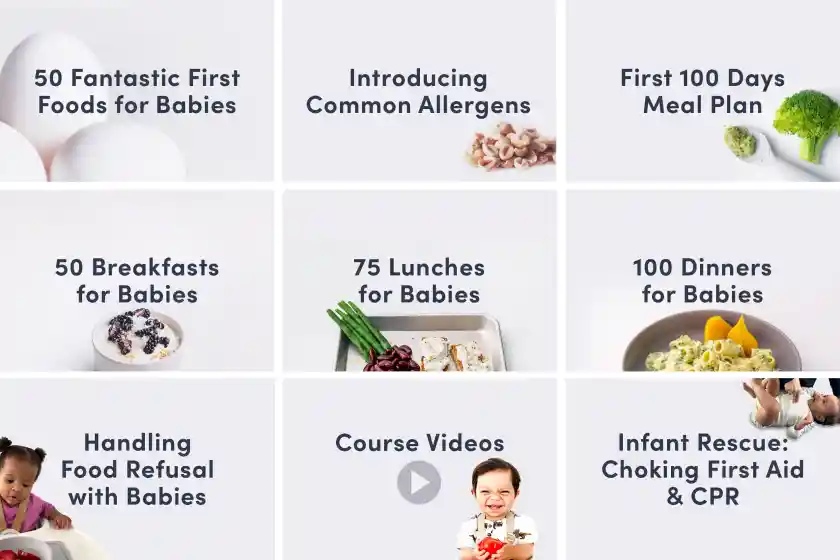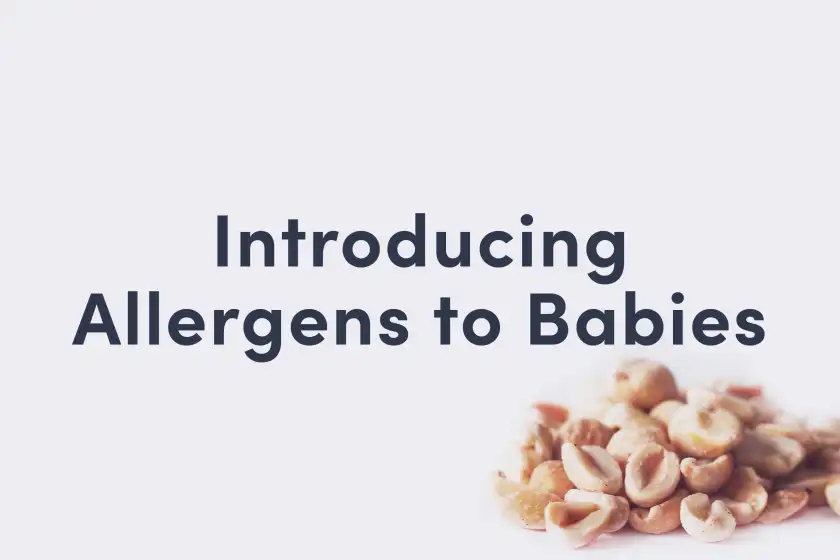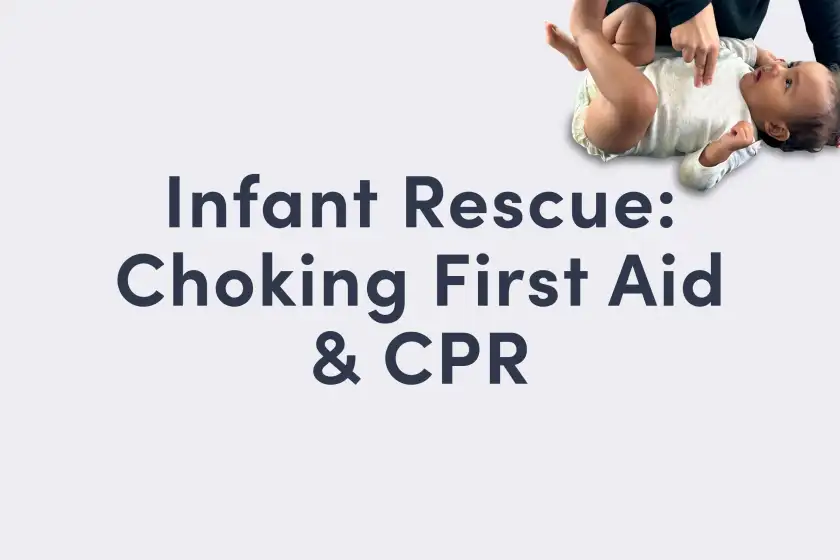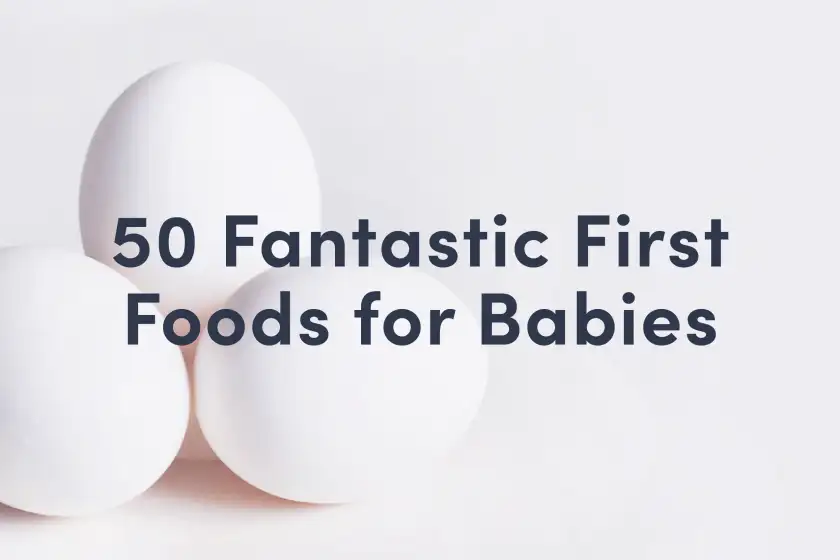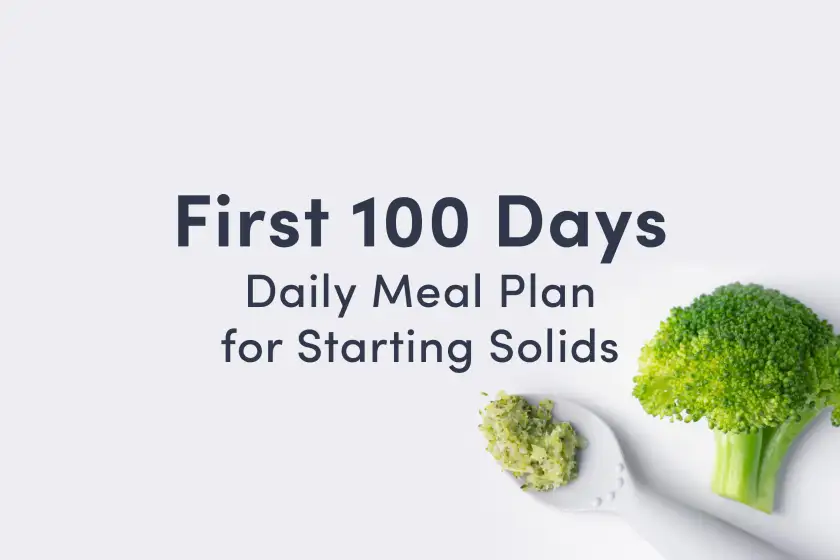Sodium in Food for Babies 6 to 12 Months
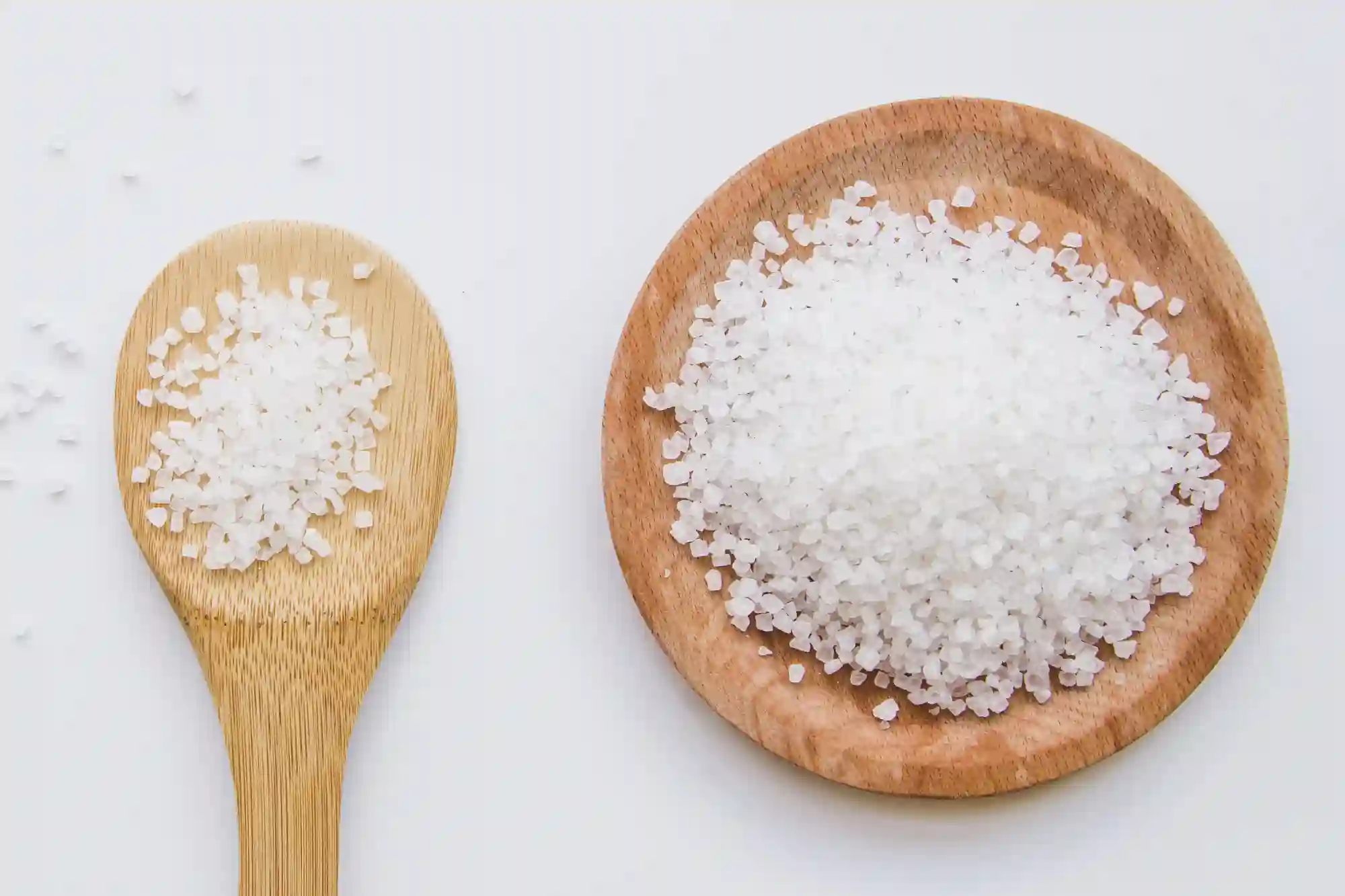
We are asked all the time: is salt safe for babies? Read on for everything you need to know.
Just starting solids? Be sure to download the Solid Starts App.
At a Glance
It is safe to offer food that contains salt as soon as baby is ready to start solids, which is generally around 6 months of age; however, be mindful of salty food.
Some food tends to be very high in sodium, such as condiments, cured meats, salty cheese, and store-bought prepared food.
Waiting to regularly offer food that is high in sodium can help leave room for baby to explore a variety of food with different colors, flavors, and textures.
Offering food that is high in salt can take up space in the belly, and, as a result, decrease a child’s motivation to try other food.
Regularly eating large amounts of salty food in early life may also impact health later on, although more research is needed.
One way to be mindful of salt is to aim for balance: reduce salt when you can, enjoy food when you can’t, and aim to share a variety of food.
There is not an exact amount of salt that baby can have daily. Sodium in the body is naturally balanced by the kidneys and by consuming breast milk or formula.
There’s no need to track or restrict sodium. These practices can create anxiety and feelings of scarcity around food for the whole family that can follow baby as they grow.
What is sodium?
Sodium is a naturally-occurring mineral found in breast milk and formula, as well as foods like dairy, egg, meat, seafood, vegetables, and even water. Sodium is an essential nutrient that our bodies need. When combined with chloride, sodium makes salt.
Is salt safe for babies?
Yes, when it is one ingredient among a variety of foods offered to baby. While many health organizations recommend reducing or omitting salt in food for baby, recent reviews of literature suggest that this may not be necessary. The amount of sodium that babies eat tends to be low as they learn the skills to feed themselves. Furthermore, sharing meals with a little salt can bring baby into their family food culture as soon as they are ready to start solids, which has benefits. Family meals are opportunities for baby to explore a wide variety of food, practice eating food with different colors, flavors, and textures, and get comfortable with food that you like to eat.
While salt is generally not a concern, there can be benefits to waiting until the child is older to regularly share very salty food. Offering food that is very high in sodium, such as condiments, cured meats, salty cheeses, and store-bought prepared food can fill up space in the belly and, as a result, lower a child’s motivation to try other foods.
Heard that too much salt can be poisonous? While possible, it is extremely rare for a child to eat a dangerous amount of salt on their own. Cases of salt poisoning typically involve ingestion of too much play-doh, forcefeeding, or child abuse. When baby is allowed to feed themselves at meal and snack times, they have built-in bodily cues that signal to stop eating too much.
How does salt impact baby’s health?
Sodium helps regulate the body’s balance of fluids and electrolytes. It also fuels metabolic reactions, powers muscles and growth, and supports the brain and the rest of the nervous system.
Because baby is smaller than you, their body does not need as much sodium as you need. Most medical institutions suggest reducing or omitting salt when possible in the first year of life. However, these recommendations are based in part on limited research that suggests that reducing sodium in early life may help children experience improved heart health. A recent 2023 literature review actually suggests that there is not enough evidence to make the claim that sodium intake in infancy alone is associated with blood pressure, cardiac, or kidney problems later in life. In fact, restricting sodium was associated with younger children seeking out salty foods, compared to children who already had salted foods in their diet.
Food containing salt is fine when it is one part of a variety of food in the diet, in part because baby is unlikely to consume a large amount of sodium as they learn how to chew and develop the skills to eat solid food. If there is a risk associated with sodium intake, it may be related to long-term health: some studies suggest that regularly eating excessive amounts of food that is very high in sodium in early life, such as condiments, cured meats, salty cheese, and store-bought prepared foods, may impact health later in life. However, the research is not conclusive, and long-term health is determined by many factors beyond food, including socio-economic status and access to a varied diet, employment, healthcare, housing, and safety.
How much sodium can baby have each day?
Every child is different, and there is not a universal standard. Baby's sodium levels are naturally balanced by their kidneys and by consuming breast milk or formula, as well as a variety of solid food. Aim for a gentle balance around meals: reduce salt when you can, enjoy food when you can’t, and aim to share a variety of food.
In the United States, most medical institutions rely on the Dietary Reference Intakes from the National Academy of Sciences, Engineering, and Medicine, which include “Adequate Intake” values for sodium for infants and toddlers. The research behind these values used natural sodium levels in breast milk to help arrive at sodium intake levels for babies by age. But the study was small, and sodium content in breast milk varies widely, which makes it challenging to establish a set amount of sodium that is meaningful and helpful to families. For infants between 7 and 12 months of age, the recommendations are based on sodium estimates in breast milk samples, plus sodium estimates in solid food offered to baby. Despite this research, there is simply a lack of definitive evidence for a maximum amount of daily sodium that can be safely consumed by any child, regardless of age.
Know that it isn’t necessary to control, track, or restrict salt and sodium-rich foods. Research shows that these practices can create anxiety and feelings of scarcity around food for the whole family that can follow baby as they grow. Do your best and know that that is more than enough.
Can baby’s kidneys handle sodium in food?
Yes. While a baby’s kidneys are still developing in the first year of life, they are able to process sodium in breast milk and formula right away. By 4 to 6 months of age, an infant’s kidneys are mature enough to process sodium in solid food. As baby is introduced to solid food and practices the skills to eat it, food containing salt is generally not of concern when it is offered in moderation. Consumption is likely to be low at first and, as a result, the amount of sodium that baby eats is also likely to be low as they build the eating skills to fill the belly with solid food. As baby begins to consume more solid food at meal and snack times, aim for balance: reduce salt when you can, enjoy food when you can’t, and share a variety of food.
How can I reduce sodium in baby’s diet?
Remember, at this age, baby is exploring solid food and learning how to eat it, and as a result, they typically do not consume a significant amount of solid food at mealtimes. In other words, the amount of sodium that they consume from solid food is typically low at first.
If you are looking for ways to reduce sodium as baby starts to consume greater quantities of solid food, here are a few options:
Before salting a dish, set aside a portion for the child, then season the rest of the dish with salt to taste for yourself
Use a low- or no-sodium product when it is available and it works with your meal
Flavor food with seasonings that are naturally low in sodium, like herbs and spices
Reduce the amount of salt or sodium-rich seasoning that a recipe suggests
Dilute sodium-rich dishes, such as mixing plain rice into a regularly-seasoned rice dish
Be mindful of foods that are high in very sodium, such as condiments, cured meats, salty cheese, and store-bought prepared food.
Foods that are commonly high in sodium:
condiments like aioli, fish sauce, ketchup, mayonnaise, mustard, and soy sauce
deli meat and cured meats like bacon, ham, and sausage
olives, pickles, and other preserved vegetables
parmesan and other hard cheeses
pre-made packaged foods like nuggets, pizza, and tater tots
salty snacks like cheese puffs, chips, and crackers
When can babies have soy sauce?
Soy sauce may be introduced in moderation once soy and wheat (a common ingredient in soy sauce) have been safely introduced and ruled out as an allergy. Many families choose to introduce soy by sharing edamame, tofu, or tempeh with baby. When you are ready to introduce soy sauce, keep in mind that it is very high in sodium. You can also use a low-sodium soy sauce or dilute it with water, vinegar, or other baby-friendly cooking liquids.
When can babies have fish sauce?
Food that contains fish sauce as an ingredient may be offered moderation as soon as baby is ready to start solids, which is generally around 6 months of age. Fish sauce contains finned fish and/or shellfish, which are common food allergens. To minimize the risk of allergic reaction, safely introduce finned fish and shellfish before sharing food containing fish sauce with baby. While fish sauce is very high in sodium, it is typically used in small amounts in cooking. If this is a concern, families can choose to reduce the amount of fish sauce suggested by a recipe or dilute it with water, lime, or vinegar.
When can babies have ketchup?
Ketchup may be introduced in moderation as soon as baby is ready to start solids, which is generally around 6 months of age, as long as it is free of honey, which poses a risk of infant botulism. Because it tends to be high in sodium, some families choose low-sodium ketchup or mix ketchup into a dish rather than sharing it on the side as dips or spreads. Do what works best for you and baby.
Can babies have baking soda or baking powder?
Food containing baking powder or baking soda may be introduced as soon as baby is ready to start solids, which is generally around 6 months of age. Baking soda and powder may be safely shared in baking and cooking because the amount used is generally small.
Can I give baking soda as a colic remedy to a child?
No. Baking soda may be safely shared in baking and cooking because the amount used is generally small. Baking soda as a home remedy for colic can be dangerous as it can be offered in amounts that are unsafe. Consuming too much baking soda at once as part of a home remedy has led to reports of significant and life-threatening electrolyte abnormalities and toxicity.
Can babies have monosodium glutamate (MSG)?
Yes. MSG has been extensively studied in adults, including pregnant individuals, and the United States Food and Drug Administration classifies MSG additives as safe. In fact, MSG is naturally present in a number of baby-friendly foods, such as breast milk, cheese, meat, mushrooms, seaweed, and many vegetables. MSG is another form of salt that is lower in sodium than table salt, and just like table salt, MSG is generally not a concern when it is one ingredient among a variety of food in an overall balanced diet.
Do not worry about MSG sensitivity, an occurrence of self-reported symptoms such as headache, numbness, flushing, tingling, palpitations, and drowsiness. The concept of MSG sensitivity is not supported by research and grew out of xenophobia of Asian cultures. It is not a verifiable medical condition.
Need more support? Check out our Starting Solids Bundle for babies and our Toddlers at the Table Bundle for children between 12 months and 3 years of age.
Written By:
V. Kalami, MNSP, RD, CSP. Board-Certified Pediatric Dietitian and Nutritionist
R. Ruiz, MD, FAAP, CLC. Board-Certified General Pediatrician and Pediatric Gastroenterologist
K. Grenawitzke, OTD, OTR/L, SCFES, IBCLC, CNT. Senior Feeding & Swallowing Specialist
K. Rappaport, OTR/L, MS, SCFES, IBCLC. Senior Feeding & Swallowing Specialist
Expert Tips Delivered to Your Inbox
Sign up for weekly tips, recipes and more!
The content offered on SolidStarts.com is for informational purposes only. Solidstarts is not engaged in rendering professional advice, whether medical or otherwise, to individual users or their children or families. No content on this site, regardless of date, should ever be used as a substitute for direct medical advice from your doctor or your medical or health professional, nutritionist, or expert in pediatric feeding and eating. By accessing the content on SolidStarts.com, you acknowledge and agree that you are accepting the responsibility for your child’s health and well-being. In return for providing you with an array of content “baby-led weaning” information, you waive any claims that you or your child may have as a result of utilizing the content on SolidStarts.com.

